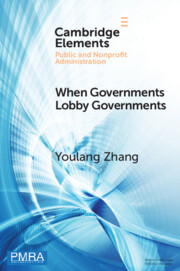Element contents
When Governments Lobby Governments
Published online by Cambridge University Press: 18 November 2022
Summary
- Type
- Element
- Information
- Online ISBN: 9781009104180Publisher: Cambridge University PressPrint publication: 15 December 2022
References
- 10
- Cited by

